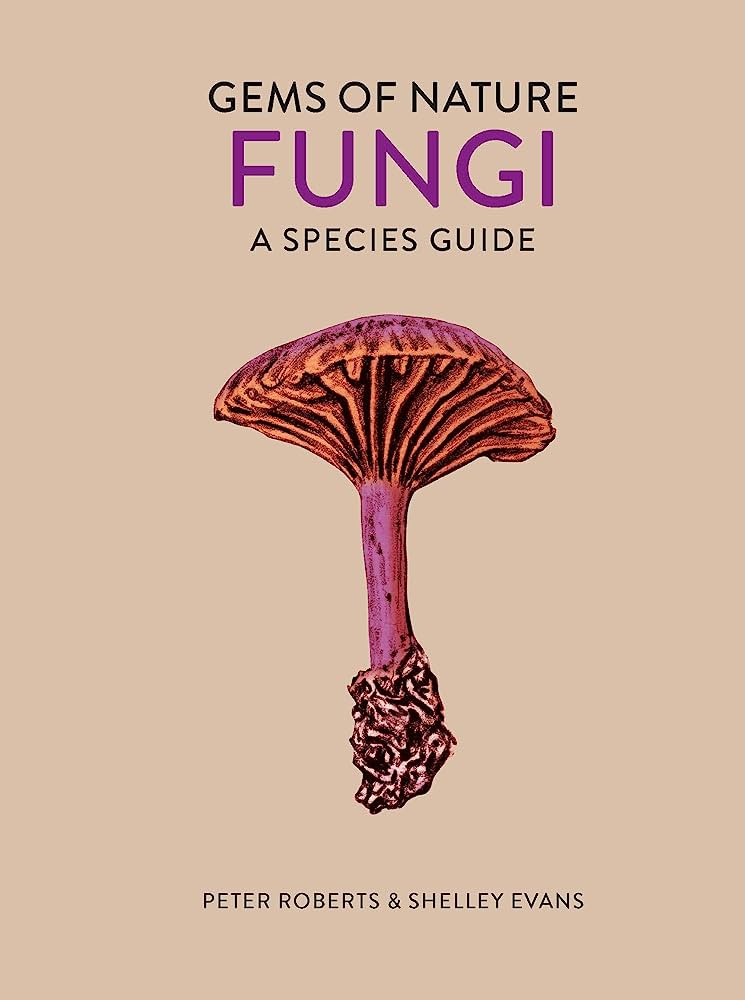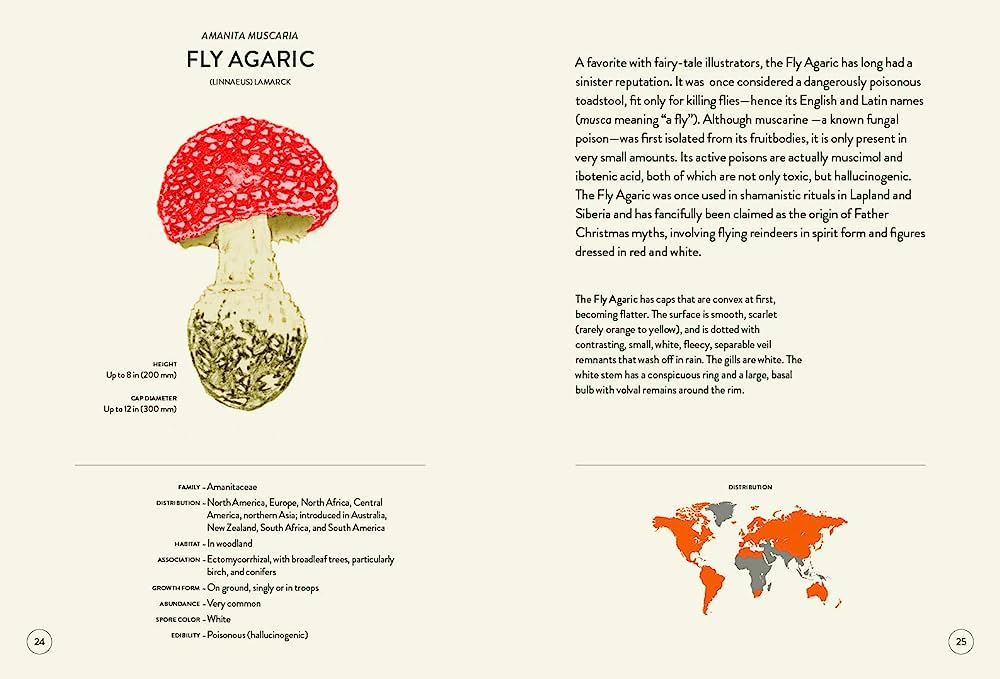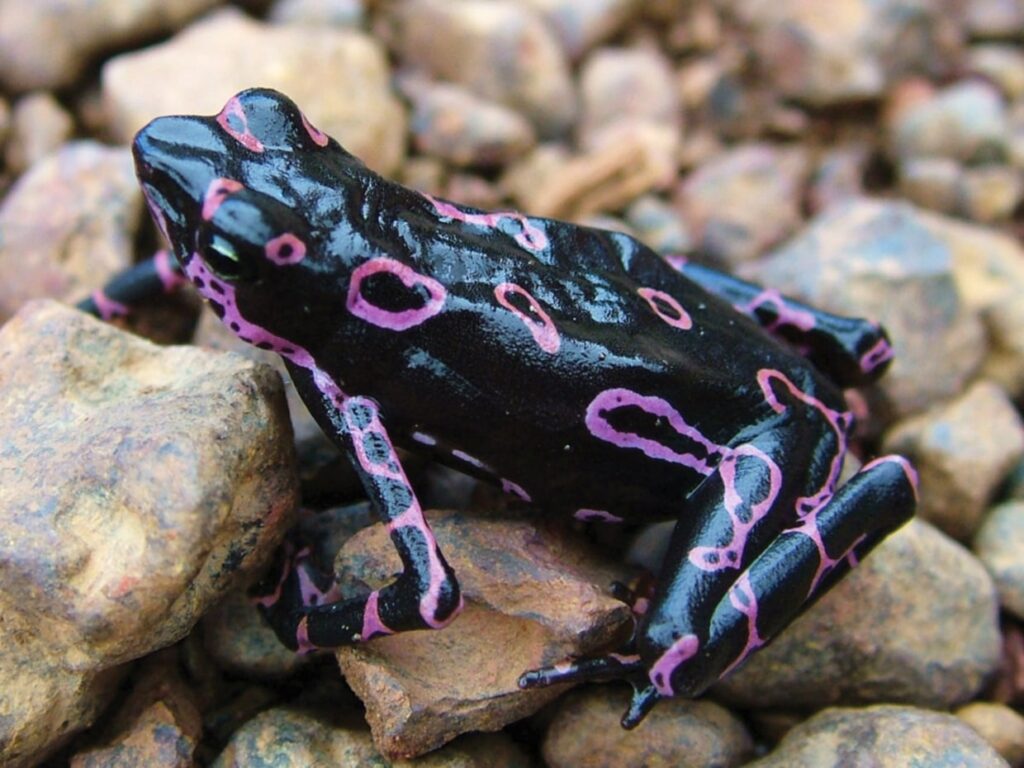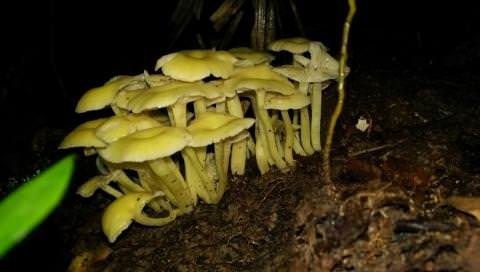Have you ever wondered about the fascinating world of fungi? Suriname, a country located on the northeastern coast of South America, is home to an incredibly diverse array of fungi species. From colorful mushrooms to microscopic molds, Suriname offers a thrilling playground for biologists and nature enthusiasts alike. In this article, we will delve into the intricate world of Suriname’s unique fungi species and discover the wonders they hold.
In Suriname, you will find a remarkable variety of fungi species, each with its own distinct characteristics and ecological role. From the towering shelf fungi that adorn the trunks of trees to the delicate coral-like formations that sprout from the forest floor, the diversity of shapes, colors, and sizes is truly awe-inspiring. As you explore the forests of Suriname, you’ll encounter fungi that serve as decomposers, breaking down organic matter and recycling nutrients back into the ecosystem. You’ll also come across mycorrhizal fungi, which form a mutually beneficial relationship with plant roots, aiding in nutrient uptake. If you’re lucky, you might even stumble upon some parasitic fungi, which rely on other living organisms to survive. So, join us as we embark on a biologist’s guide to Suriname’s unique fungi species, where you’ll learn about their fascinating life cycles, ecological importance, and the challenges they face in an ever-changing world.

Overview of Suriname’s Fungi Species
Suriname, nestled on the northeastern coast of South America, is renowned for its rich biodiversity, encompassing vast rainforests, pristine rivers, and diverse ecosystems. While the country’s flora and fauna have captured the attention of scientists and nature enthusiasts alike, its fungi species often remain overlooked. In this biologist’s guide, we delve into the importance of studying Suriname’s unique fungi species, explore their diverse habitats and distribution, investigate their identification and classification methods, and uncover their ecological roles in Suriname’s ecosystems.
Importance of studying Suriname’s fungi species
Fungi play a crucial role in shaping ecosystems by decomposing organic matter, forming symbiotic relationships, and even causing diseases. Despite their significance, Suriname’s fungi species have received limited attention, making their study essential to understand the country’s biodiversity holistically. By examining the fungal kingdom in Suriname, scientists can gain valuable insights into fungal ecology, evolutionary processes, and the intricate connections between fungi, plants, and animals.

Diversity of fungi in Suriname
Suriname boasts a remarkable diversity of fungi species, reflecting its varied ecosystems and favorable climate. The dense rainforests, savannahs, wetlands, and even urban areas provide distinct habitats for fungi to thrive. From the towering canopy to the forest floor, these unique environments harbor a plethora of fungal species, including molds, yeasts, rusts, smuts, and mushrooms.
Endemic fungi species in Suriname
Suriname is home to several endemic fungi species, meaning they are found exclusively within its borders. These endemic fungi not only contribute to the country’s biodiversity but also hold potential scientific interest due to their evolutionary uniqueness. By studying these species, researchers can unlock valuable insights into the region’s biogeography and uncover hidden treasures that may have medical or industrial applications.

Habitat and Distribution of Suriname’s Fungi Species
Different habitats supporting fungal growth in Suriname
Suriname’s diverse ecosystems provide an array of habitats suitable for fungal growth. The rainforests, with their towering trees, provide the perfect environment for macrofungi, such as mushrooms, to flourish. The wetlands and river banks offer ample opportunities for aquatic fungi colonization, while the savannahs and grasslands enable the growth of grass-associated fungi. Additionally, urban areas and agricultural landscapes are not exempt, harboring unique fungal communities.
Geographical distribution of fungi species in Suriname
Suriname’s fungi species exhibit intricate distribution patterns across the country. Some fungi are widely distributed, occurring in several habitats and regions. Others display a more restricted distribution, limited to specific ecosystems, soil types, or altitudes. Understanding the geographical distribution of fungi is crucial for conserving their habitats and implementing effective management strategies.
Identification and Classification of Suriname’s Fungi Species
Morphological characteristics used for identification
Traditionally, morphological features have been crucial in identifying fungi species. Examining color, shape, texture, and other macroscopic characteristics helps differentiate one species from another. Suriname’s fungi showcase an incredible array of shapes, sizes, and colors, making them fascinating subjects for morphological identification.
Microscopic and molecular techniques for species classification
In recent years, microscopic and molecular techniques have significantly advanced the field of fungal taxonomy. Microscopy allows scientists to examine spores, hyphae, and other microscopic structures in detail, aiding in accurate identification. Additionally, molecular techniques, such as DNA sequencing and phylogenetic analysis, provide a deeper understanding of the genetic relationships between fungi species, allowing for more precise classification and taxonomy.

Ecological Roles of Suriname’s Fungi Species
Fungi as decomposers in Suriname’s ecosystems
One of the essential ecological roles played by fungi is their ability to decompose organic matter. Suriname’s fungi contribute significantly to the breakdown of fallen leaves, dead wood, and other plant materials, recycling nutrients back into the ecosystem. Without fungi, the natural cycles of nutrient recycling would be disrupted, affecting the overall health and functioning of Suriname’s forests and other ecosystems.
Mutualistic interactions with plants and animals
Suriname’s fungi also engage in mutualistic partnerships with plants and animals. In mycorrhizal associations, fungi form symbiotic relationships with plant roots, aiding in nutrient uptake and water absorption. This mutualism benefits both the fungi and the plants, ensuring their survival and growth. Additionally, certain fungi species provide essential food sources and habitat for insects and other animals, illustrating the intricate web of ecological interactions in Suriname’s diverse ecosystems.
Pathogenic fungi affecting Suriname’s flora and fauna
While many fungal species support ecosystems, some can have detrimental effects on Suriname’s flora and fauna. Pathogenic fungi, for example, can cause diseases in plants, leading to reduced crop yields and biodiversity loss. Understanding the prevalence and impact of pathogenic fungi is crucial for implementing effective management strategies to mitigate their negative effects on Suriname’s flora and fauna.
Medicinal and Bioactive Compounds from Suriname’s Fungi Species
Potential pharmaceutical applications of Suriname’s fungi
Suriname’s fungi hold immense potential as sources of new pharmaceutical compounds. Many fungi produce bioactive compounds that exhibit antimicrobial, anti-inflammatory, and anticancer properties. By exploring the medicinal potential of Suriname’s fungi, researchers can identify new drug candidates and contribute to the development of novel treatments for various diseases.
Bioactive compounds with antimicrobial properties
The search for new antimicrobial agents is of utmost importance in the face of increasing antibiotic resistance. Suriname’s fungi offer a vast resource of bioactive compounds that show promise in combating drug-resistant bacteria, viruses, and fungi. By studying these unique fungi species, scientists can uncover natural antimicrobial compounds and potentially develop new therapeutic options in the fight against infectious diseases.
Exploration of traditional indigenous knowledge
Suriname is home to indigenous communities with deep traditional knowledge of the country’s flora and fauna. These communities have long recognized the medicinal properties of certain fungi species. Collaborations between scientists and indigenous communities can foster the exchange of knowledge, aiding in the identification of valuable medicinal fungi and preserving traditional practices for future generations.

Threats and Conservation of Suriname’s Fungi Species
Habitat destruction and deforestation
Like many regions, Suriname faces the threat of habitat destruction and deforestation. Logging, agriculture, and infrastructure development pose significant challenges to the survival of fungi species, as their habitats are destroyed or fragmented. Conservation efforts must prioritize the protection of Suriname’s forests and ecosystems, ensuring the preservation of fungi species and their crucial ecological roles.
Climate change impacts on fungal diversity
Climate change poses another significant threat to Suriname’s fungi species. Alterations in temperature, rainfall patterns, and ecosystem dynamics can directly impact fungal growth, distribution, and interactions. Some fungi species may face extinctions, while others may thrive in the changing conditions. Understanding the implications of climate change on Suriname’s fungi is crucial for implementing effective conservation strategies.
Conservation strategies for preserving Suriname’s fungal biodiversity
Conserving Suriname’s fungal biodiversity requires a multi-faceted approach. It involves creating protected areas, promoting sustainable land use practices, and raising awareness about the importance of fungi in Suriname’s ecosystems. Collaborative efforts between scientists, conservation organizations, and local communities are vital for safeguarding Suriname’s fungi for future generations.
Fieldwork and Research Techniques
Sampling methods for fungi collection
Fieldwork is a fundamental component of studying fungi species in Suriname. Scientists employ various sampling methods, such as collecting fruiting bodies, taking soil samples, and utilizing trapping techniques. These samples provide valuable data for species identification, distribution mapping, and ecological studies.
Laboratory techniques for fungal isolation and culture
Once collected, fungi samples undergo a series of laboratory techniques for isolation and culture. These techniques allow researchers to grow and study fungi in controlled laboratory conditions, enabling further analysis of their morphology, genetics, and biochemical properties. By isolating fungi species, scientists can delve deeper into their unique characteristics and ecological roles.
Field identification tools and resources
Field identification of fungi species can be a challenging task due to their vast diversity. Biologists rely on field guides, visual keys, and species descriptions to aid in the identification process. These resources, combined with observation skills and knowledge of fungi taxonomy, facilitate accurate species identification in Suriname’s various habitats.
Case Studies on Suriname’s Unique Fungi Species
Recent discoveries of rare fungi species
Suriname continues to surprise scientists with the discovery of rare and previously unknown fungi species. Recent expeditions have uncovered fascinating specimens with unique characteristics, captivating the curiosity of researchers worldwide. These newly discovered fungi provide valuable insights into Suriname’s fungal diversity and the importance of further exploration and documentation.
Ecological studies on specific fungal communities
Scientists conduct ecological studies to understand the relationships between fungi species and their surrounding environment. By examining specific fungal communities in different habitats, researchers can unravel the ecological roles of these fungi, their interactions with other organisms, and their responses to environmental changes. These studies shed light on the intricate dynamics within Suriname’s diverse ecosystems.
Collaborative research initiatives
Fungal research in Suriname often involves collaborative efforts between local scientists, international researchers, and indigenous communities. These partnerships foster knowledge exchange, enhance research capacity, and promote the conservation of Suriname’s fungal biodiversity. Collaborative research initiatives are fundamental in tackling the challenges and expanding the horizons of fungal research in Suriname.
Impact of Suriname’s Fungi Species on Industries and Agriculture
Fungal applications in agriculture and crop production
Fungi have valuable applications in agriculture and crop production. Beneficial fungi, such as mycorrhizal species, aid in nutrient uptake by plants, enhancing crop yields and improving soil health. Moreover, fungi can combat plant diseases by acting as biocontrol agents, reducing the reliance on chemical pesticides. Harnessing Suriname’s unique fungi for sustainable agriculture practices holds the potential to enhance food security and reduce environmental impacts.
Fungi in bioremediation and waste management
Certain fungi species have the ability to degrade toxic substances, making them valuable tools in bioremediation and waste management. These fungi can break down pollutants, such as oil spills or industrial wastewater, into harmless compounds. By harnessing the power of Suriname’s fungi, we can tackle environmental contamination issues and protect the country’s natural resources.
Industrial uses of fungal enzymes and metabolites
Suriname’s fungi offer a diverse array of enzymes and bioactive metabolites with industrial applications. Fungal enzymes, such as cellulases and proteases, are widely used in various manufacturing processes, including food production and biofuel development. Suriname’s unique fungi may harbor undiscovered enzymes with specialized properties, making them valuable resources for industrial sectors.
Ethnobiology and Cultural Significance
Traditional uses of fungi by indigenous communities in Suriname
Indigenous communities in Suriname have a profound connection to nature and a deep understanding of the traditional uses of fungi. These communities utilize fungi for medicinal purposes, spiritual ceremonies, and dietary needs. Their knowledge and practices surrounding fungi represent a rich cultural heritage that deserves recognition and preservation.
Ritual and cultural practices related to fungi
Fungi hold significant importance in the ritual and cultural practices of Suriname’s indigenous communities. Mushrooms, for example, are often utilized in spiritual ceremonies and as tools for communicating with the spirit world. Studying the cultural significance of fungi helps us appreciate the deep-rooted connection between Suriname’s indigenous communities and their natural environment.
Ethnomycological studies and documentation
Ethnomycology is the scientific study of how fungi are utilized by different cultures. Conducting ethnomycological studies and documenting indigenous knowledge about fungi in Suriname is essential for preserving cultural heritage and ensuring that future generations can benefit from this invaluable wisdom. Collaboration between scientists and indigenous communities facilitates the documentation and conservation of Suriname’s ethnomycological heritage.
Challenges and Future Perspectives
Obstacles in studying Suriname’s fungi
Studying Suriname’s fungi presents several challenges. The vastness of the country, the diversity of its ecosystems, and the limited research infrastructure are obstacles that researchers must overcome. Additionally, the rapid loss of habitats due to deforestation and climate change further emphasizes the urgency of comprehensive fungal research in Suriname.
Integration of traditional and scientific knowledge
Integrating traditional and scientific knowledge is a key aspect of advancing fungal research in Suriname. By combining indigenous knowledge with scientific methodologies, researchers can gain a more holistic understanding of Suriname’s fungi species and their ecological functions. Collaboration between scientists and indigenous communities is vital in this endeavor.
Emerging areas of fungal research
Fungal research is an evolving field, with new areas of study constantly emerging. Suriname’s unique fungi species open doors for exploring fungal genomics, exploring their symbiotic relationships with other organisms, and discovering novel bioactive compounds. These emerging areas of research hold promising opportunities for advancing our understanding of Suriname’s fungal biodiversity.
Collaborative Efforts and Partnerships in Fungal Research
National and international collaborations
Fungal research initiatives in Suriname thrive through national and international collaborations. Partnerships between Surinamese scientists, universities, research institutions, and international counterparts encourage knowledge exchange, resource sharing, and capacity-building. These collaborations ultimately strengthen research outcomes and contribute to the conservation and sustainable management of Suriname’s fungi.
Government initiatives and funding support
Government initiatives and funding support are crucial for fostering fungal research in Suriname. Through research grants, scholarships, and infrastructure development, the government can empower scientists and enable them to conduct comprehensive studies on the country’s fungi species. Government support also plays a vital role in implementing conservation measures and raising awareness about Suriname’s unique fungal biodiversity.
Educational Resources and Outreach Programs
Fungal workshops and training programs
Education and training programs are vital for equipping biologists and local communities with the knowledge and skills needed to study, conserve, and appreciate Suriname’s fungi. Fungal workshops, field courses, and training programs offer hands-on experiences, allowing participants to develop field identification skills, learn laboratory techniques, and engage with experts in the field.
Online databases and resources for researchers and enthusiasts
The availability of online databases and resources greatly facilitates fungal research in Suriname. Online platforms dedicated to Suriname’s biodiversity, including fungi, provide a centralized repository of information, species records, and research publications. These resources offer valuable support to researchers, educators, and enthusiasts interested in Suriname’s unique fungi species.
Promoting public awareness and education about Suriname’s fungi
Raising public awareness about Suriname’s fungal biodiversity is fundamental to fostering appreciation and conservation efforts. Public lectures, exhibitions, and outreach programs can engage the local community and educate them about the significance of fungi in the country’s ecosystems. By involving the public, we can inspire future generations to safeguard Suriname’s fungal heritage.
Conclusion
Suriname’s unique fungi species are a treasure trove of biodiversity, waiting to be explored and understood. As biologists, it is our responsibility to study, conserve, and appreciate these organisms, recognizing their ecological roles, cultural significance, and potential applications. By delving into the diverse habitats, identifying and classifying species, uncovering their ecological roles, and promoting collaborative research, we can contribute to the preservation of Suriname’s fungal biodiversity and unlock the secrets hidden within its fungi-rich landscapes.